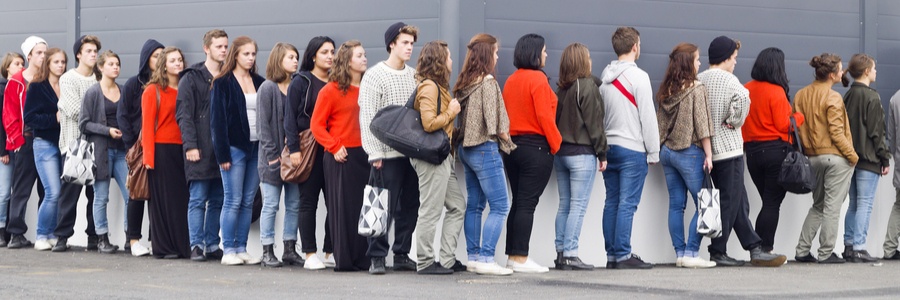“Where Do Broken Hearts Go?” was a hit ballad for Whitney Houston. “Where do disenfranchised shoppers go?” is an increasingly important question for retail-sector market research as store closures continue to disrupt consumers’ familiar purchase paths. Each round of closures is an inflection point that puts displaced shoppers’ spending and brand loyalty up for grabs.
To win the battle to retain or pry away disenfranchised shoppers after a location closes, brands need fast, reliable data and insights into exactly who has been displaced, where they’re going now, and why they’ve taken that path. The stakes are high, with 3,500 store closings expected this year, according to RetailTouchPoints.
To find, connect with and understand these displaced customers, your best way forward is to combine observational mobile location-visitation data and mobile survey data.
Start with a validated, first-party market research panel that’s large and diverse enough to represent relevant populations of the disenfranchised. Once you’ve taken that crucial step, here are tips on how to proceed.
First challenge: Identify the displaced consumers.
- Solution: Always-on mobile location tracking records and archives 500,000 daily visits by opted-in consumers to the top 1,000 U.S. retailers, plus an additional 250,000 daily visits to other commercially-significant locations such as entertainment venues and transportation hubs.
- Result: Researchers quickly identify consumers who have made past visits to now-closed stores and can continue to observe their movements for changes in path-to-purchase patterns.
Second challenge: Understand where displaced consumers are landing.
- Solution: Continue always-on tracking of validated disenfranchised shoppers in the weeks or months after a store closure, closely observing for any changes in their brick-and-mortar store-visitation patterns.
- Result: Obtain location insights into what they do next.
- Insights Opportunities:
- Who remains loyal by switching to another store in the same retail chain?
- See who’s in play by comparing pre-closure and post-closure visitation patterns. Those who are shopping around are important targets for further inquiry into how they can be influenced.
- Identify shoppers who have switched loyalties as a result of a store closure and are now shopping mainly or exclusively at a competing store that’s a short distance from the one that closed.
- See which displaced shoppers have stopped visiting any store in the category. Are they shopping online instead? And at whose eCommerce site?
- Solution: Mobile surveys targeted specifically to validated consumers in each behavioral segment - new store, same retailer/switched to a competitor's store after closure/trying different stores/stopped shopping at brick-and-mortar stores in the category.
- Result: Useful consumer understanding that helps drive actions and decisions on a number of fronts.
- Insights Opportunities:
- The data and insights could inform a variety of marketing efforts, including advertising, discount offers, upgrades of retailers’ apps and online-stores’ attractiveness and functionality to capture dropouts from brick-and-mortar stores.
- Retailers also can inquire and gain insights into which products and product categories are most important to disenfranchised shoppers as they decide where to go now.
Many other retail problems and opportunities that require fast, trustworthy data will benefit from advanced mobile research solutions. The key inputs that power all these research situations are a large, top-quality, first-party consumer panel that’s engaged and willingly opted in for behavioral tracking as well as surveys.
By coloring observed location data with surveys, and validating the surveys with location data, researchers can gain insights they need to help their brands and clients succeed amid the disruptive changes impacting the retail industry.



